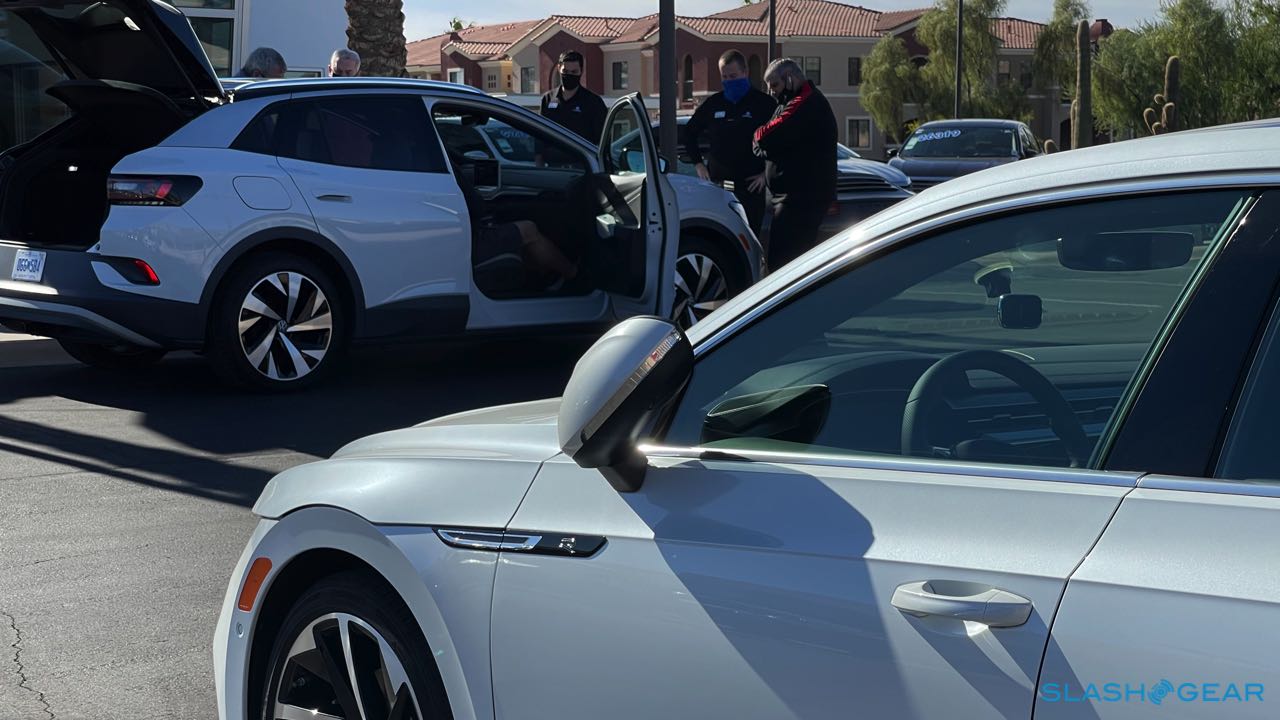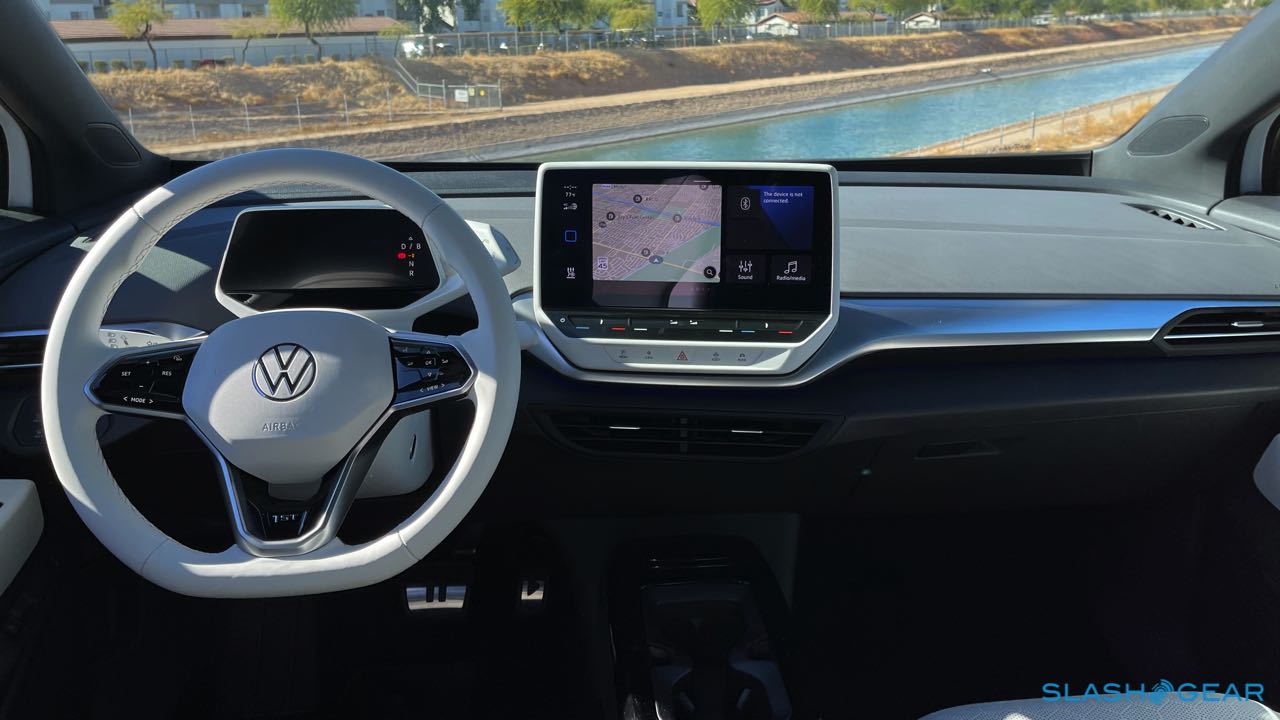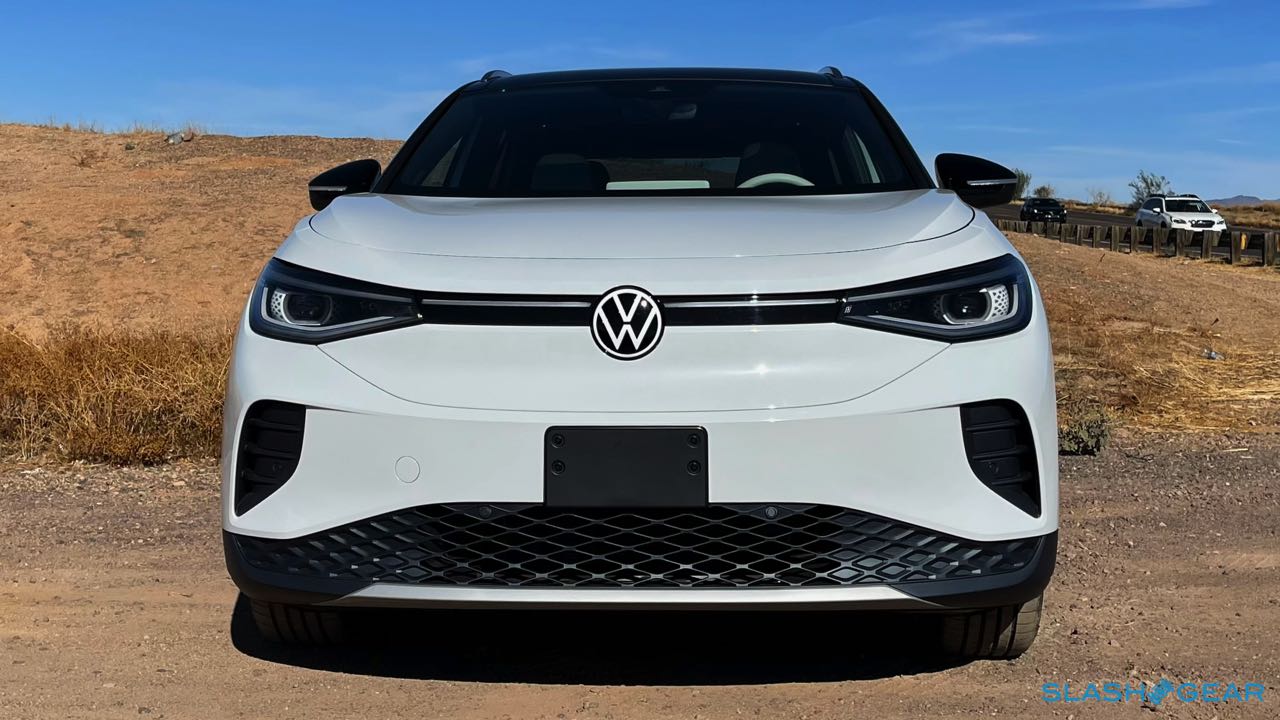2021 Volkswagen ID.4 First Drive - Ripe for the Picking
The 2021 Volkswagen ID.4 is America's first taste of a new-age VW electric vehicle. Riding atop the German carmaker's EV-specific MEB platform, the ID.4 is all-new from the ground up, and it certainly feels like it both inside and out. After my brief stint driving the ID.4. I can see why it makes a lot of sense for the US market from a starting price perspective, especially with the longer range battery option.
Even the ID.4 1st Edition – which, as the name implies, will be first to arrive and carry a $45,190 base price – offers terrific value, once you get done applying the applicable federal and local tax credits. By way of comparison, a base 2021 Toyota RAV4 Prime starts anywhere from $39,000, and a fully-loaded Prime XSE starts at $41,425.
For the money, VW's 2021 ID.4 aims straight at the heart of PHEV owners who are looking to go full-electric. That said, I would pit America's newest EV – the Mustang Mach-E as the most significant competitor to the Volkswagen.
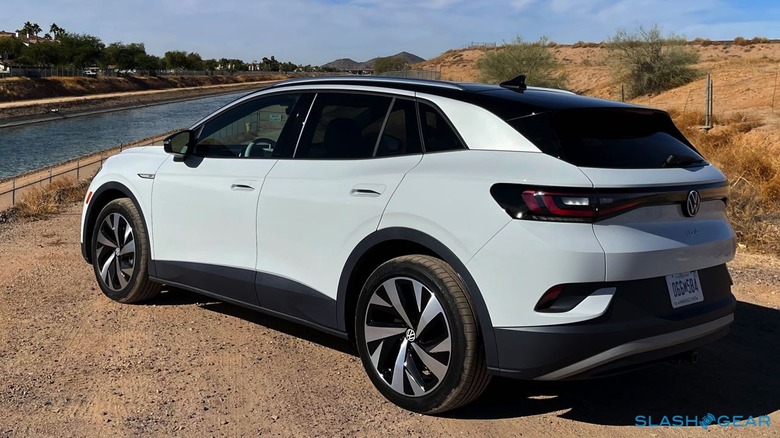
The VW ID.4 started life as the ID. Crozz Concept from the 2017 Los Angeles Auto Show, and the production version has inherited most of the concept's fluidic shape, including those potent wheel bulges and strong shoulders. Pushing the wheels out to the far corners delivers a sizable 4,584 mm wheelbase to offer plenty of front and rear legroom. Equally important, the stretched wheelbase contributes to ID.4's superior ride quality and confident handling. With the rear seats up, there are 30.3 cu-ft of trunk room to carry all sorts of stuff; drop them, and that expands to 64.2 cu-ft.
Not all EV owners like the attention brought by a Tesla. Many who are willing, but yet to take the all-electric plunge want a normal-looking car with no fancy doors, and I think this is where the 2021 ID.4 shines the most. It doesn't have the upright stance of a Tiguan, nor is it intentionally butch like VW's Atlas Cross Sport. Instead, think of the ID.4 as an electric crossover version of VW's newest eighth-gen Golf GTI with its 8.27-inch ground clearance. It's not dramatically unique from other crossovers, but it has a premium and sportier appeal like the GTI.

At the moment, the VW ID.4 comes with a single rear-mounted electric motor and an 82 kWh battery pack. VW claims up to 250 miles of range between charges and 0 to 60 mph in around 7.5 seconds with a heavy right foot. That's not bad for a roomy, five-seat crossover, though it's not the torque madness we've seen other automakers capitalize on as they coax us into EVs.
Ford's approach makes that clear. The ID.4 is quite a bit slower from 0-60 than the Mustang Mach-E RWD, which clocks in at 5.8 seconds for both the Select standard and extended range RWD. The Route 1 and Premium trims come in at 6.1 seconds for the extended range RWD.

The Mach-E will undoubtedly give you a more thrilling experience when you slam on the throttle from stop to cruising speed. Just like not everybody wants or needs a Mustang coupe as their daily driver, though, I suspect that for most buyers what VW is offering should be just fine.
On the open road, you can make full use of the single motor's 201 horsepower and 228 pound-feet of torque, making the ID.4 feel zippier to 60 mph than it is. Top speed is electronically limited to 100 mph. If you can wait until 2022, meanwhile, VW will unleash the ID.4 with dual electric motors and 302 horsepower, drawing juice from the same 82 kWh battery pack. The dual-motor ID.4 promises better performance, but it will only be good for around 230 miles of range: that's the deal you make in exchange for more power.

You can charge the batteries at home using a conventional 110-volt or 240-volt socket, but the VW ID.4 accepts DC fast-charging up to 125 kW. With the latter, a recharge from zero to 80-percent takes 38 minutes. With a Level 2 charger, you're looking at more like 7.5 hours for a charge.
If you're a conscientious driver or strive to be a hypermiler, then it's important to know that VW has configured the ID.4 to "coast" by default. This means that, in the "D" mode, releasing the accelerator allows the car to continue moving forward with little to no friction to slow it. It can be efficient, but you do need to plan ahead and, in stop and go traffic, that can be a challenge.
In "D" mode, stepping on the brakes will still net you some battery power recuperation. A harder press, though, brings in the physical brakes more rapidly. Personally, I much preferred driving in the "B" mode, which allows for one-pedal driving. There's more regen taking place in this mode, and I found it easy to master during my quick stint.
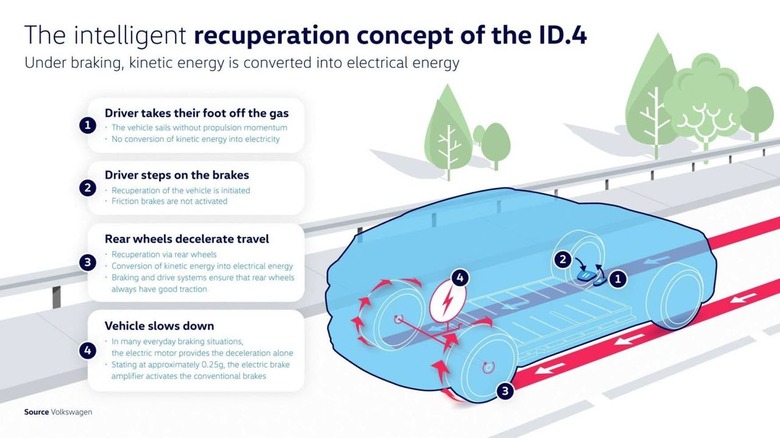
The icing on the battery cake is free power. Volkswagen is including three years of fast charging at any of Electrify America's DC fast-charging stations. The good news is you get this free perk whether you buy or lease the ID.4, although you won't be able to take advantage if you're using the EV for commercial ride-sharing purposes.
On the inside, the ID.4's cabin is as quiet as any production EV, and the interior is resplendent in soft-touch plastics and more refined materials. I particularly like the thick-rimmed, flat-bottom steering wheel, and minimalist dashboard. There's no start or stop button, either: you simply get in, flip the lever to drive mode, and you're off.

Since the gear lever is an extension of the 5.3-inch digital instrument display – your turn or flick it to engage Drive or Reverse, and push to get Park – the center console is freed up for two extra-large, easy-to-reach cup holders and a vast cubby for storage. You also get ambient lighting, a large 10-inch infotainment touchscreen with standard Apple CarPlay and Android Auto, voice recognition, and navigation. The 1st Edition model has the optional Statement Package, which includes a larger 12.0-inch touchscreen display and 12-way power front seats with both memory and massage functions.
On the safety front, the 2021 VW ID.4 has is yet to be crash-tested by either the Insurance Institute for Highway Safety (IIHS) or the National Highway Traffic Safety Administration. There's a decent array of standard and optional driver-assistance tech onboard, though, including automatic emergency braking with pedestrian detection, blind-spot monitoring, adaptive cruise control, and lane departure warning with lane-keeping assistance.

The VW ID.4 isn't perfect. It does have a roomy trunk in the back, yes, but you don't get a frunk under the hood for more storage. Nor do you get a spare tire, either, a questionable decision given VW's marketing of the crossover as a practical family vehicle. More annoying than I expected? The infotainment system has no physical volume knob, something other automakers have flirted with and then generally backtracked on rapidly.
Nitpicking aside, the 2021 VW ID.4 can tow up to 2,700 pounds, and even the base model has a heated steering wheel, rain-sensing wipers, and 19-inch alloy wheels. The cabin has a solid feel devoid of rattles and squeaks. It's not as mind-blowingly quick as a Tesla or the Mustang Mach-E, but it handles like a Golf GTI. It feels planted, agile, and ready to play, with almost zero body roll when attacking tight, winding corners.
I suspect that, just as VW has made a reputation for itself with cars that prove to be eminently livable, the ID.4's charms will be in its consistency. Sure there'll be faster, and longer-lasting versions in the future, not to mention the rest of VW's aggressive electrification roadmap but just as the Golf has cemented itself as never a bad choice, so too the ID.4 is aiming for a mass market audience rather than risk-taking early adopters. That, along with VW's ambitious production goals, have helped the crossover already qualify as a contender for the 2021 World Car of the Year award.
It feels like we've had to wait a while to see Volkswagen's long-promised electric strategy actually arrive at American dealerships, but the 2021 ID.4 seems like it was worth our patience. As the category expands, VW's approach to change how drivers perceive electric vehicles in general is a fairly different one. While that may seem conservative, I'd expect it to resonate well with the sort of potential owners who – while large in number – have yet to be convinced by EVs designed to appeal to those at the bleeding-edge.





